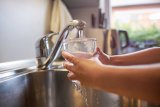Learn the Issues
-
Oil and Gas Equipment and Service Providers Directory
Directory for sharing information about service and technology providers that can facilitate methane emission reduction activities
-

Lead in Private Well Water and its Impacts on Children's Health
There is no safe level of lead. Lead can be present in drinking water without any noticeable changes in color or odor. It is the responsibility of private well owners to test their water for lead and to take appropriate measures to mitigate exposure.
-
EPA Releases Draft TSCA Risk Evaluations for Phthalates DBP and DEHP for Public Comment and Peer Review
On June 4, 2025, EPA released the draft risk evaluations for phthalates DBP and DEHP for public comment and peer review.
-
Agriculture and Natural Events and Disasters
Every year natural disasters, such as hurricanes, floods, fires, earthquakes, and tornadoes, challenge agricultural production.
-
EPA to Hold June 4 Public Hearing on cleanup Plan for Johns Manville Corp Superfund Site in Waukegan, Illinois
The public comment period for the cleanup plan starts today, May 28
EPA News Release: EPA to Hold June 4 Public Hearing on cleanup Plan for Johns Manville Corp Superfund Site in Waukegan, Illinois
-
Look for the Logo Outreach Materials
Lead RRP Look for the Logo Outreach Materials
-
EPA環保署採取行動保證提供消毒產品供對付新型冠狀病毒用
corona, covid-19, corona virus Press Relesae: : 華盛頓特區訊 — 今天,美國環保署(EPA)採取進一步行動,幫助推進生產和提供已在環保署登記的消毒劑。環保署將暫時准予一些已在環保署登記消毒劑的製造商,從任何供應商處取得某些活性材料,而無須先向環保署查詢。但此只以環保署名單N-用於對付SARS-CoV-2消毒劑之產品為限。此行動於上個星期在環保署作出某些惰性材料類似行動之後又一行動。
-
Missouri Operating Permit Approval History
Information on permitting in Kansas and EPA's oversight.
-
Are there specific medical tests available for vinyl chloride?
Medical tests to determine if you have been exposed to vinyl chloride include measuring vinylchloride in your breath but must be collected shortly after exposure. The test is not useful for very low levels of exposure. Thiodiglycolic acid, which is a breakdown product of vinyl chloride detected in urine, can…
-
Clean Water Act Administrative Order and Directives
Cleanwater (311c) Act Administrative Order and Directives
-
Newsletter: East Palestine Train Derailment Response, 6-20-2023
Newsletter June 13 for East Palestine Train Derailment Response
-
Videos
Site videos about the cleanup from the East Palestine Train Derailment emergency response.
-
Newsletter: East Palestine Train Derailment Response, 4-18-2023
April 18 newsletter in html for East Palestine Train Derailment Response
-
STR0300: Ultra-low Sulfur Diesel Batch Facility Summary Report
STR0300 Ultra-low Sulfur Diesel Batch Facility Summary Report for diesel manufacturers.
-
Documents, Reports and Photographs for SI Group USA (USAA), LLC - North Plant (Formerly Addivant USA LLC , General Electric) in Morgantown, West Virginia
RCRA Corrective Action Addivant USA North Plant , Morgantown WV, Documents & Reports,(Formerly: Chemtura Corp., General Electric Company,
SI Group USA (USAA) -
Passaic River 101
This page contains general information and also examples of programs and organizations working in the Passaic location including: cleaning up the Passaic, US Army Corps of Engineers, the Newark Riverfront Park
-
Grand River 101
This page contains specific projects and organization overviews including: education efforts, connecting local governments, removing the dams and restoring the rapids.
-
Documents, Reports and Photographs for SI Group USA (USAA), LLC - South Plant (Formerly Addivant USA LLC , General Electric) in Morgantown, West Virginia
RCRA Corrective Action Addivant USA LLC South Plant Morgantown WV, Reports,(Formerly: Chemtura Corp., General Electric Company) , SI Group USA
-
South Platte Watershed Partnership List
List of South Platte Watershed Partnerships
-
South Platte River Urban Waters Partnership Summary Document
A document summarizing the focus, goals, and strategies of the Urban Waters Partnership.
